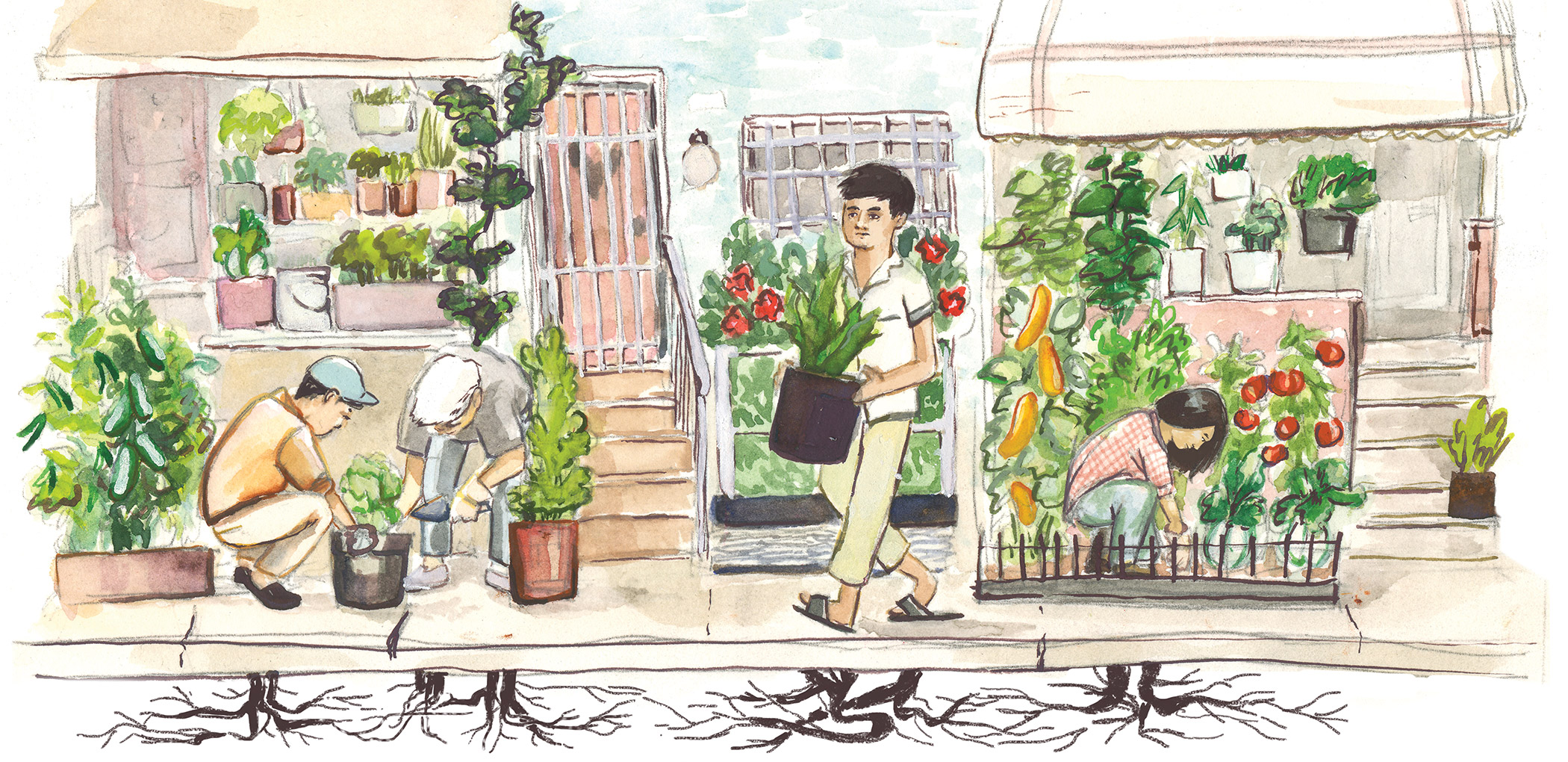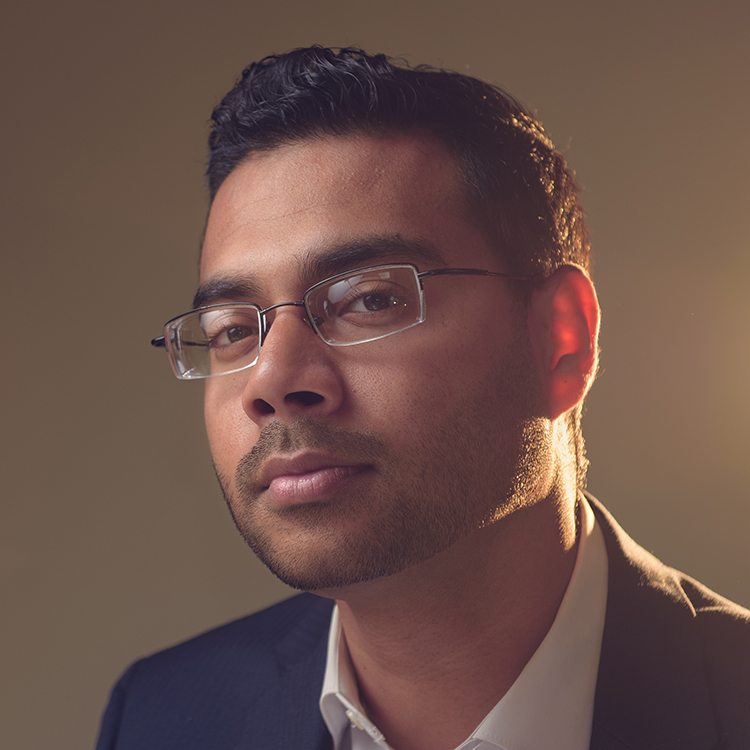Refugees Take Root
by Lan Dinh
Growing up on the 4700 block of Sansom Street, an area where many Southeast Asian refugees were initially resettled, I still remember the food oasis in our 5-by-5 back porch. Beautiful, big, fuzzy leaves crawled up every vertical inch of available gate, pole or fencing. My parents were skilled in choosing the best branches to build strong, uncollapsible forts. I would play in the fort, hiding among hanging melons and vegetables of every size, some bigger than my head. Magical buckets gave birth to large, juicy, delicious tomatoes, peppers and more. I remember our pet ducks that would mysteriously disappear right before a large community dinner. Transforming tiny row home stoops and backyards into food jungles has been a story of Southeast Asian resettlement and resilience since the 1980s and 1990s. This predated the trendification of urban gardening. As I have learned from my parents, it began as a form of survival and a desperate hope to recreate a semblance of home.
Southeast Asian refugees from Vietnam, Cambodia and Laos came to the U.S. en masse in the aftermath of the Vietnam War, known in Vietnam as the Resistance War Against America, which followed hundreds of years of colonialism. The legacy of colonialism meant that the region experienced one of the worst levels of land-ownership disparity in the world among the wealthy and poor leading up to the war. This is what inspired Vietnamese revolutionaries to organize peasants around the promise of equitable land redistribution. This is a war in which the U.S. dropped 19 million gallons of Agent Orange herbicide on 4.5 million acres of land, which contaminated water and soil and continues to cause serious illness.
More than 1 million people fled land dispossession, violence, genocide and starvation. Southeast Asians were relocated to the U.S. between 1975 and 1995 as part of the largest resettlement of refugees in U.S. history. Tens of thousands were resettled in resource-poor areas of Philadelphia where they faced poverty, racism, language barriers, loss of voice and social isolation. Mostly populated in South Philadelphia, as development and gentrification rises, the Vietnamese community continues to be uprooted along with other working class communities of color.
Land has always been political and personal to Vietnamese people. Although there has been trauma from oppressive denial of land, chemical warfare and displacement, it has also served as a source of resilience and as a political tool.
In the summer of 2016, VietLead, a grassroots nonprofit, explored how Vietnamese community members perceived the multifaceted issues of land and community control. In a six-week community-organizing bootcamp, called SumOurRoots, high school students learned about the history of Vietnam, food sovereignty and movements for social justice. They then interviewed and captured the stories of 60 community members. One interviewee summed it up: “Knowing your heritage is to know what it looks like, what it sounds like, what it tastes like, what it feels like. Gardening is like a ceremony: Everyone must have their own routine.”
Growing is seen as a critical part of restoring self-determination in the Vietnamese community. Cultural foods are seen as essential to Vietnamese identity, as it is passing on tradition to younger generations in the face of assimilation to American culture. It allows community relationships to build, as one interviewee noted, “We can’t talk to each other, because I don’t know English, but we can at least sit together, have some tea and just look at my garden.” For retraumatized refugees, gardening provides spiritual and mental healing. Another interviewee related, “It gives me the purpose to wake up every morning.” Gardens have the power to rebuild dignity and self-worth through validation: Refugees can affirm the knowledge they hold with the land.
Gardening is an activity that the Vietnamese community may partake in more than voting or attending school meetings, as almost every house has a garden or bucket of plants. Growing together on a shared piece of community-controlled land has the potential to build increased civic participation in the Vietnamese community that can extend beyond the neighborhood to activities such as organizing against pollution from local oil refineries and rising
deportation orders.
Access to land remains a clear priority. VietLead is a member of Soil Generation, a black- and brown-led coalition working for food sovereignty and land access in Philadelphia. Student leaders of VietLead have testified with Soil Generation for increased protection of existing community gardens and transparent pathways to ownership. As Neary Narom, a VietLead student leader has written, “With the power of gardening, it gives us strength to believe that those memories [of war] may scar us, but it cannot and will not leave a permanent mark. We need the city to make access to land a priority so that we can create gardens in order for our elders and community to heal, both physically and emotionally.”
VietLead will implement the second installment of SumOurRoots to build power within the Southeast Asian community in solidarity with growers of color, collaborating with the Cambodian Association of Greater Philadelphia and the Bhutanese American Organization of Philadelphia. We must prioritize securing access of land for disenfranchised, low-income communities of color—so we can build communities of self-determination—not for
corporate development.
Lan Dinh is the farm and food sovereignty projects director with VietLead, and you can find more information on the organization and its SumOurRoots project at vietlead.org.




